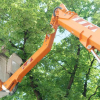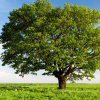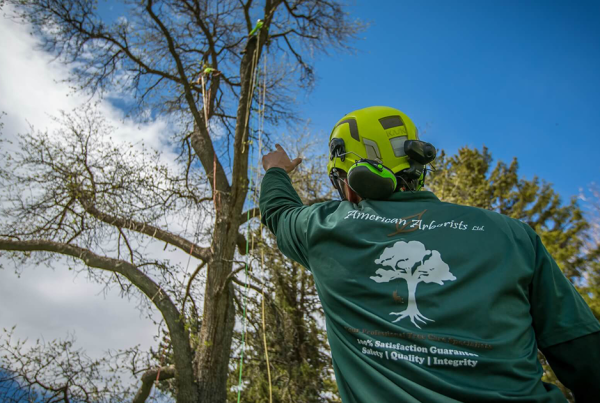
Each and every one of us knows what a tree is and what it looks like. At a young age, most of us have probably enjoyed many an afternoon playing in one of the trees in our neighborhoods. Trees are majestic. They provide beauty to any landscape, provide nice cool shade on hot afternoons, and they even provide a rich ecosystem for birds, lizards, and other animals.
Although most trees share many different things in common, such as a trunk, limbs, and branches, there are specific aspects that make each species unique to one another. In the United States alone, there are quite a number of varieties that are naturalized and indigenous to this part of the world. And the western region of the US is home to a large chunk of those different species.
The following are a few of the different types of trees found in the western U.S., from the northwestern down to the southwestern regions.
Trees In The Western United States
Blue Spruce (Picea pungens)
Blue spruce is one of the many species of spruce trees that include the green spruce, white spruce, Colorado spruce, and the Colorado blue spruce. This type of tree is indigenous to the Rocky Mountains, but their natural range covers some parts of northern New Mexico all the way to the state of Wyoming. The blue spruce, however, has been widely introduced to just about everywhere in the United States, because this tree is often used as an ornamental tree in many regions far beyond New Mexico and Wyoming.
- The blue spruce tree belongs to the coniferous tree family, and some of its distinctive features include the blue-colored needles, scaly gray bark on the trunk, and yellowish-brown branches.
- This tree is cultivated for the Christmas tree industry and the ornamental tree industry for gardens and parks. It is the State Tree of Colorado.
Lodgepole Pine (Pinus contorta)
The lodgepole pine, otherwise known as the twisted pine or the shore pine, is most commonly found in western North America, near ocean shores, hence the name shore pine. However, the lodgepole pine can also be found in dry montane forests and subalpine zones.
- This particular tree species supports a myriad of wildlife habitat and is a significant resource for local communities throughout the western United States.
- The timber of the lodgepole tree is often used for various woodcrafts such as framing, utility poles, paneling, railroad ties, posts, and pulpwood.
Quaking Aspen (Populus tremuloides)
The quaking aspen is a type of deciduous tree indigenous to the cooler regions of western North America. The quaking aspen tree has many different names, including the trembling aspen, quakies, mountain aspen, golden aspen, trembling poplar, popple, white poplar, and many more.
- If you’ve noticed, many of the names like quakies, quaking, or trembling is often used. This is because of the fluttering sounds the leaves make when hit by a breeze or a gust of wind.
- Like many aspen trees, the quaking aspen is perhaps one of the most visible of western North American hardwoods, providing biodiversity, specialty forest products, wildlife habitat, livestock forage, and of course a very majestic scenery.
White Fir (Abies concolor)
Also known as the Colorado white fir, this particular tree is indigenous to the mountains of western North America, growing in elevations of 3,000 to 11,000 feet above sea level. The white fir is classified as a medium to a large evergreen coniferous tree, growing up to 80 to 195 feet tall. The trunk of an adult white fir can have a diameter of up to 6 feet.
- The white fir, which is also sometimes called the concolor fir, is quite popular as an ornamental landscaping tree despite its significant size, and is often time used as a Christmas tree in parks and large gardens. This tree, if well maintained and healthy, is quite a sight to look at.
Douglas Fir (Pseudotsuga menziesii)
Sometimes spelled as Douglas-fir, this particular tree belongs to the evergreen conifer species that is indigenous to western North America. It is one of the most dominant types of trees found in the foothills of the Rocky Mountains, although they are also found in the upper slopes at medium altitudes.
- The Douglas fir, named after the Scottish botanist David Douglas, has been successfully transplanted throughout most of North America, specifically in the more temperate zones.
- Its wood is commonly used for structural lumber, decking, and paneling.









